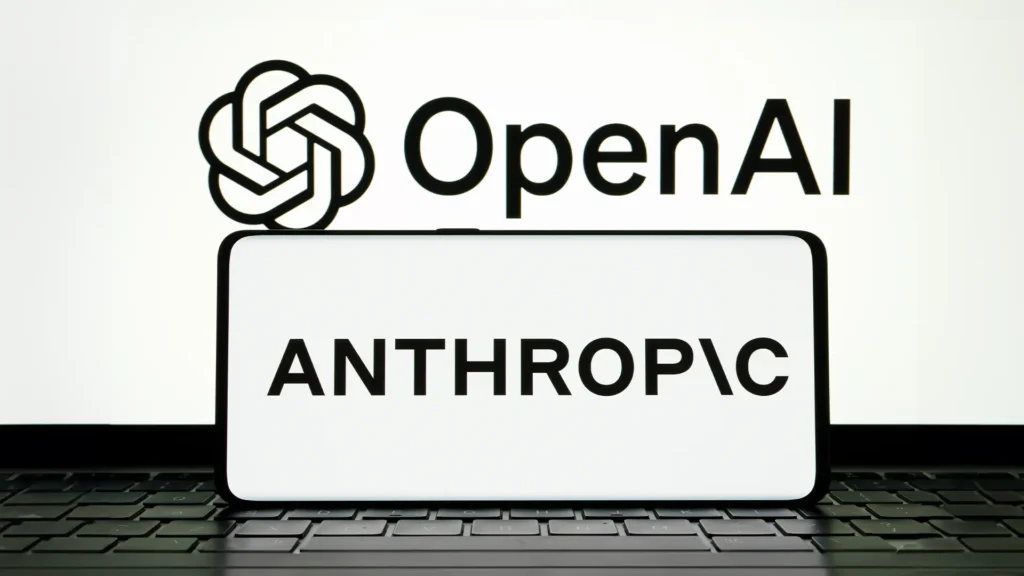In a striking turn within the artificial intelligence (AI) landscape, two leading AI firms — OpenAI and Anthropic — are reportedly exploring the deployment of investor capital to finance potential settlements for massive legal claims. This development, originally revealed by the Financial Times, points to the increasingly severe legal risks that prominent AI developers now face.
As the AI arms race intensifies, the possibility that the next battleground might be the courtroom is growing ever more real. Below is a deeper look at what is happening, why it matters, and how the companies might navigate this minefield.
Table of Contents

Legal Overhangs: From Copyright to Multibillion-Dollar Risk
The core pressure on OpenAI and Anthropic comes from a wave of lawsuits alleging that tech firms used copyrighted works without consent to train their AI models. These claims—filed by authors, artists, publishers, and rights holders—assert that when AI systems digest vast troves of textual and visual content, much of it is under copyright protection. The argument is that plugging in such content without appropriate licensing or compensation infringes creators’ legal rights.
Both OpenAI and Anthropic now face the possibility of multi-billion-dollar liabilities if courts or settlement processes rule in favour of plaintiffs. In one recent development, a U.S. judge in California provisionally approved a $1.5 billion class-action settlement involving authors and Anthropic. This signals both the magnitude of claims and the legal environment closing in on AI companies, according to Reuters.
For many of these firms, traditional insurance offerings for such emerging AI risks are insufficient or unavailable. The AI industry’s rapid pace means that conventional risk underwriting struggles to keep up, which leaves gaps in coverage. As one insurance executive told the FT, the industry “broadly lacks enough capacity for model providers.”
In response, companies like OpenAI are reportedly investigating alternative financial structures to buffer against catastrophic legal exposure. Among the options under discussion is a so-called “captive”—a specially ringfenced fund or vehicle funded by investors that acts as an internal insurer for specific risks. This would allow AI firms to set aside capital proactively rather than relying wholly on third-party insurance policies.
How Investor-Backed Settlements Might Work
The concept may sound complex, but the essence is relatively straightforward: OpenAI and Anthropic would draw on capital from their backers to form a dedicated pool of money meant to absorb losses stemming from litigation. This differs from relying entirely on external insurance, which often comes with caps and exclusions unsuitable for the unpredictable scale of AI damage claims.
In practice, this could mean:
- Ringfencing funds: Capital is isolated in a trust or captive vehicle, preventing dilution or diversion into unrelated operations.
- “Self-insurance” models: Rather than paying premiums to external insurers, the firms assume much of the financial risk themselves, using the investor-funded capital as a buffer.
- Investor exposure and oversight: Backers would have higher visibility into legal risk, and might demand heavy due diligence or controls before contributing.
- Layered insurance strategy: The captive fund could complement (not entirely replace) third-party insurance, taking first losses while insurers cover excess layers.
According to the FT report, OpenAI has enlisted the global risk firm Aon to help structure coverage and evaluate exposure. The report suggests that OpenAI’s current coverage for “emerging AI risks” is up to $300 million. However, there is internal disagreement: some sources claim the figure is significantly lower, and all parties seem to agree that even if confirmed, the cover is inadequate versus the scale of potential suits.
Anthropic, for its part, is reportedly mixing its own capital with possible investor funds to build a legal war chest. While the company already has some reserves, the settlement in California and persistent legal pressure make additional financing routes more attractive.
Of course, none of this has been confirmed by either OpenAI or Anthropic. As of now, both companies, as well as Aon, have remained publicly quiet in response to inquiries. Reuters itself could not independently verify all the FT’s claims.

Strategic & Industry Implications
If OpenAI and Anthropic follow through on investor-backed settlement funds, the ripple effects will be felt across multiple domains: AI development, investor relations, legal norms, and competition.
1. New financial norms in AI
AI’s speculative nature—especially at the frontier where large language models and generative systems operate—makes risk management unusually complex. Traditional valuation and insurance mechanisms are often insufficient. By turning to investor capital as a backstop, these companies could create a new model for how AI firms finance, govern, and bear legal risk.
2. Investor scrutiny intensifies
Investors contributing to these funds will demand high transparency, strong governance, and legal oversight. They will effectively become stakeholders in the companies’ litigation strategies, not merely financial backers. That dynamic could influence everything from model training behavior, data usage policies, to decisions about contesting or settling suits.
3. Competitive pressure across the AI field
If OpenAI and Anthropic succeed in creating robust internal risk buffers, other AI developers may face increased pressure to match them. Otherwise, firms without such safeguards might become liabilities or less viable partners in larger ecosystems (for example, in industry, healthcare, or media sectors that demand risk assurance).
4. Shift in litigation calculus
For plaintiffs and rights holders, knowing that defendants have dedicated funds ready to settle or litigate may encourage more aggressive suits. The settlement leverage changes—for better or worse—if defendants are less constrained by external insurance limits.
5. Signal to regulators & policymakers
Such moves could draw regulatory scrutiny. Governments might interpret internal “captive” funds as steps toward financial institutions, with implications under banking, finance or securities law. Furthermore, the size and structure of such funds may raise questions about whether AI firms are effectively preparing for systemic risk.
In Nigeria and across Africa, the implications resonate too. Local regulators and companies watching AI developments will likely track how global players manage AI risk capital. The strategies adopted by OpenAI and Anthropic may become templates—or cautionary tales—for emerging firms across the continent.
Outlook, Challenges, and Questions
Though the investor-funded settlement idea is intriguing, there are significant hurdles ahead.
- Scale mismatch: The potential exposure from multiple class actions and copyright suits likely runs into the billions, far exceeding the $300 million “emerging risk” coverage OpenAI has reportedly secured.
- Valuation of risk: Quantifying the legal risk in a fast-evolving field is extremely difficult. Judges, juries, or settlement mediators may impose judgments far beyond expectations.
- Investor appetite: Even heavily invested backers may baulk at underwriting unlimited or loosely bound legal exposure. The returns on AI may be high, but losses from litigation could be catastrophic.
- Governance complexity: Setting up and managing a captive or ringfenced fund requires strong governance, legal structure, regulatory compliance, and auditability.
- Moral hazard and model incentives: If firms know they have backup funds, might they engage in riskier behaviour regarding training data, licensing, or content usage? That raises ethical and reputational risks.
- Regulatory oversight: Authorities could require that such funds comply with insurance, securities, or banking laws, complicating execution.
- Public perception: Stakeholders, artists, authors, and media firms might see investor-funded legal war chests as defensive walls rather than accountability mechanisms.

In the months ahead, key signals to watch include whether OpenAI or Anthropic formally announce such structures, how much capital is committed, and how investors respond. Also critical will be developments in ongoing lawsuits and settlement negotiations—especially the $1.5 billion author case involving Anthropic.
From a strategic standpoint, the move underscores how AI is no longer just a technology frontier but also a legal and financial frontier. The era where companies only worry about model performance and compute costs is over; now the courtroom looms as a major terrain.
For Nigeria and the broader African tech community, this is a defining moment. As local practitioners, investors, and policymakers watch this unfold, the lessons about risk allocation, legal resilience, and capital structure could chart the future of AI growth on the continent.
Join Our Social Media Channels:
WhatsApp: NaijaEyes
Facebook: NaijaEyes
Twitter: NaijaEyes
Instagram: NaijaEyes
TikTok: NaijaEyes





